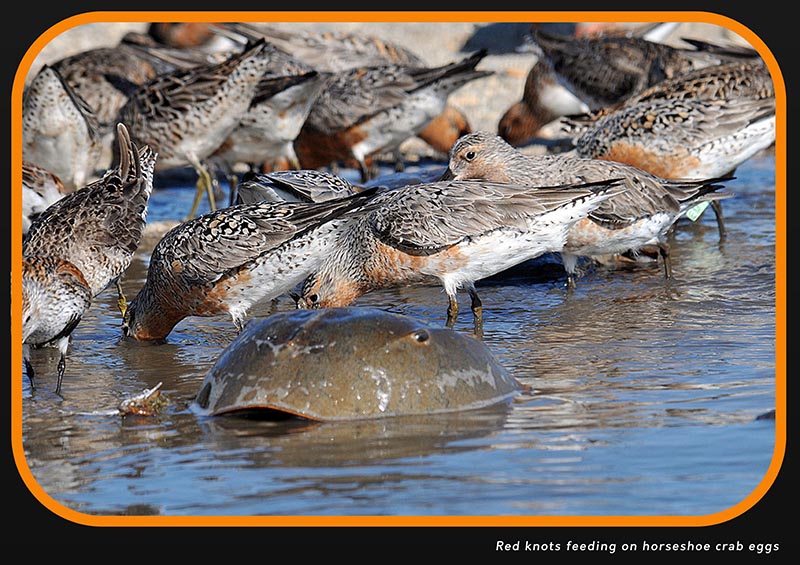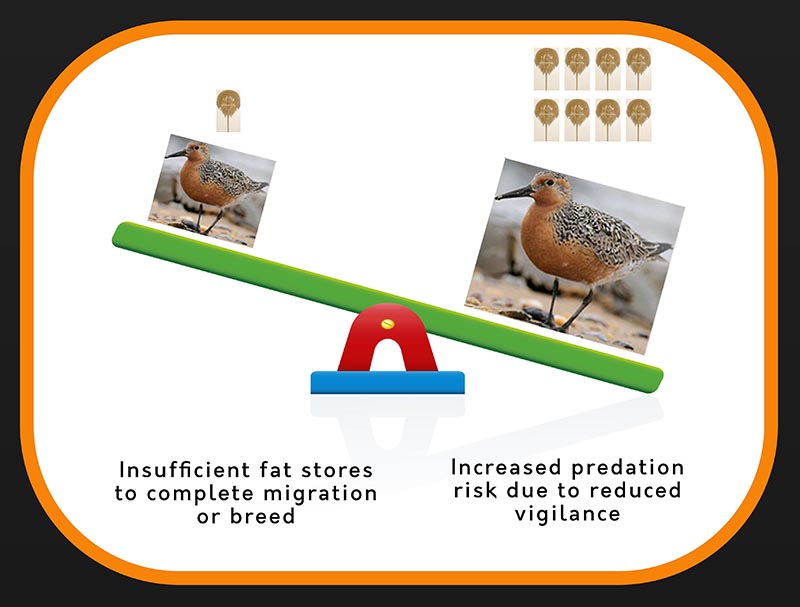Red Knots and Foraging
 One factor that is known to interrupt eating and may contribute to the lack of obesity
in the wild is predation.The evolutionary selection pressures to remain vigilant for
predators are strong and have shaped the evolution of mechanisms for interrupting
feeding rapidly when a predator is present.
One factor that is known to interrupt eating and may contribute to the lack of obesity
in the wild is predation.The evolutionary selection pressures to remain vigilant for
predators are strong and have shaped the evolution of mechanisms for interrupting
feeding rapidly when a predator is present.
While reducing feeding to deal with predators may have immediate benefits, there are long-term costs to not eating that affect development, growth, and reproduction. Thus, a balance is maintained called the foraging/predator avoidance tradeoff, and it is an important part of an ecological concept called optimal foraging. Optimal foraging theory is widely used by scientists to predict how animals behave when searching for food.
Searching for food requires energy, and optimal foraging theory states that animals need to be as efficient as possible when foraging so that they can maximize growth, development and reproduction with the food that they are able to find. Obviously if prey animals don't avoid predators, none of these things matter.

Above: Red Knots travel thousands of miles from Argentina to their summer breeding grounds
in the Artic. Red knots must refuel by eating foods high in fat (such as horseshoe
crab eggs) but cannot spend too much time feeding or they miss their opportunity to
breed. The scientific theory that explains how animals know to balance energy needs
without becoming obese is called optimal foraging theory. Red Knots exhibit the fastest
energy consumption of any known tetrapod, increasing their body mass by 60% in two
weeks by eating horseshoe crab eggs (equivalent to a 175 pound man gaining 105 pounds
in two weeks!). To eat as much as a Red Knot, you would need to eat 46 Big Macs a
day for 14 days!
Museum at Texas Tech University
-
Address
3301 4th Street, Lubbock, TX 79415 -
Phone
806.742.2490 -
Email
museum.texastech@ttu.edu
